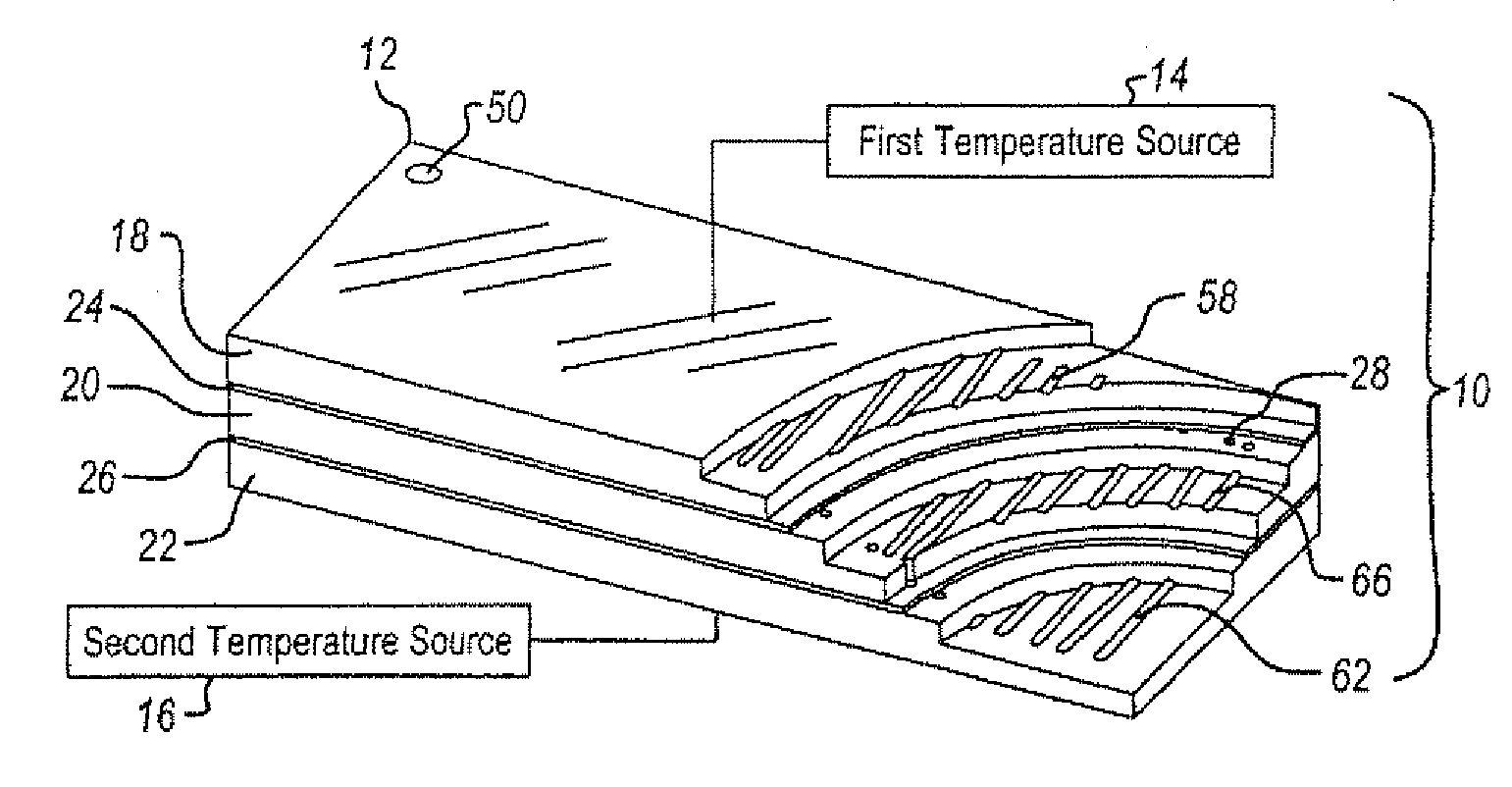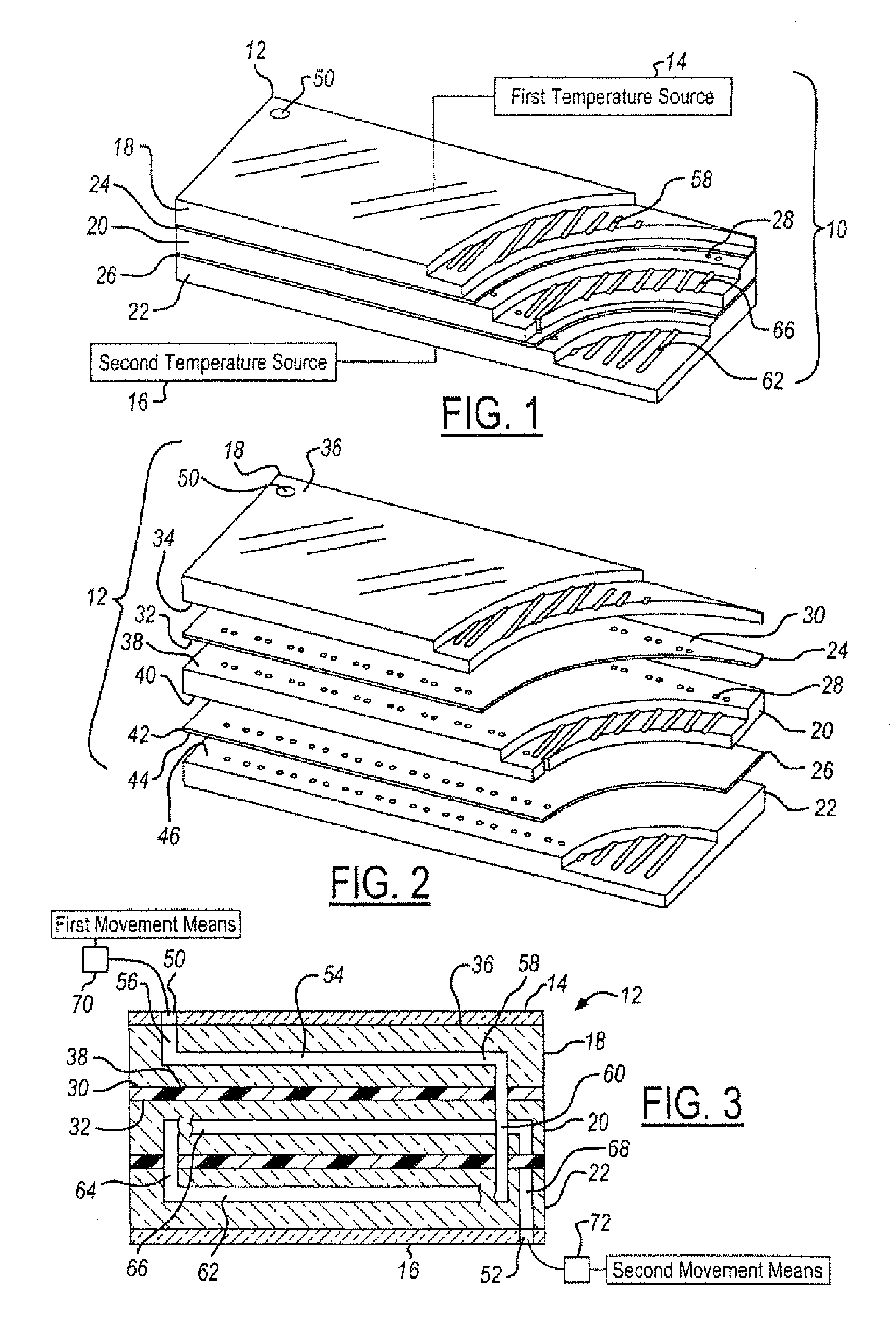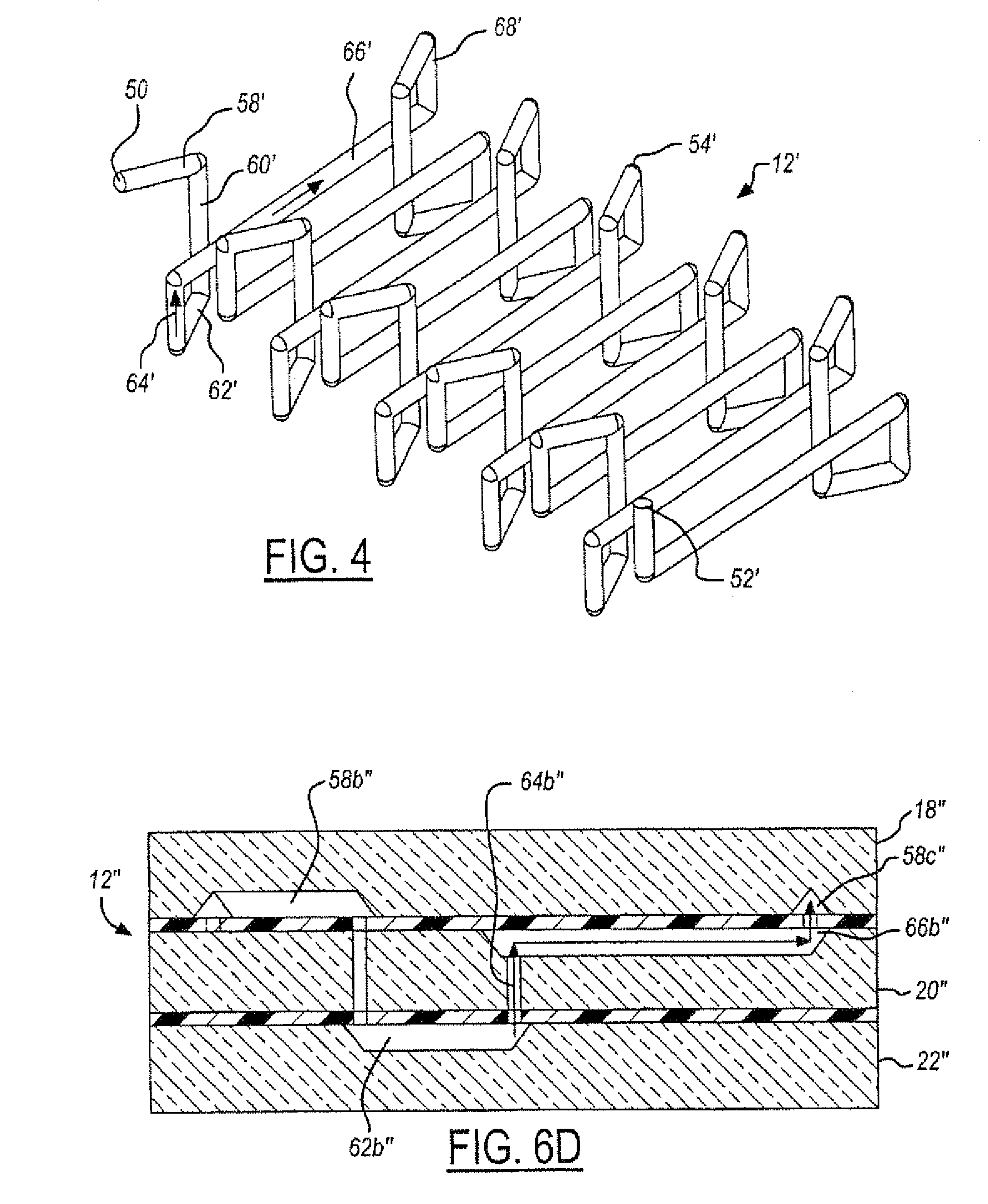Thermal cycling device
- Summary
- Abstract
- Description
- Claims
- Application Information
AI Technical Summary
Benefits of technology
Problems solved by technology
Method used
Image
Examples
second embodiment
A method for operating the present invention includes introducing a sample into the device having a plurality of layers. Prior to the introduction of a sample, the temperatures of the individual layers maintain three temperatures required in the PCR protocol. In this embodiment, the temperature of the bottom thermally conductive layer is lower than the upper thermally conductive layer. Thus, once a steady state has been reached by the three conductive layers the sample is introduced into the device. It should be noted that when thermal equilibrium, the entire upper layer is at the same temperature as the temperature source and the entire lower layer is at the temperature of the lower temperature source. Thus, the device is in equilibrium. The middle layer is at an equilibrium temperature between the upper and lower temperatures. The sample is placed through the input port and in the case of the second embodiment, is provided to an initial denaturing stage longer than the other denat...
sixth embodiment
Referring now to FIG. 16, the present invention is illustrated. In this embodiment, a third temperature source 200 is illustrated. The third temperature source 200 includes a first contact 202 and a second contact 204. The contacts may be configured in a similar manner to that described above with respect to FIG. 11. That is, joule heating may be performed through the device and through the second layer 20v. That is, the extension layer may also be heated. In this embodiment, the insulating layers 24v and 26v may have increased insulating properties so that each of the layers are or are nearly thermally independent. That is, in an embodiment with three temperature sources it may be desirable to reduce or eliminate the thermal dependency of each of the layers. Of course, the heating may also be performed by an independent heating layer such as a polysilicon heater illustrated above. That is, an independent heater such as a polysilicon heater would be located between one or both of th...
PUM
| Property | Measurement | Unit |
|---|---|---|
| Temperature | aaaaa | aaaaa |
| Electrical conductor | aaaaa | aaaaa |
| aaaaa | aaaaa |
Abstract
Description
Claims
Application Information
 Login to View More
Login to View More - R&D
- Intellectual Property
- Life Sciences
- Materials
- Tech Scout
- Unparalleled Data Quality
- Higher Quality Content
- 60% Fewer Hallucinations
Browse by: Latest US Patents, China's latest patents, Technical Efficacy Thesaurus, Application Domain, Technology Topic, Popular Technical Reports.
© 2025 PatSnap. All rights reserved.Legal|Privacy policy|Modern Slavery Act Transparency Statement|Sitemap|About US| Contact US: help@patsnap.com



